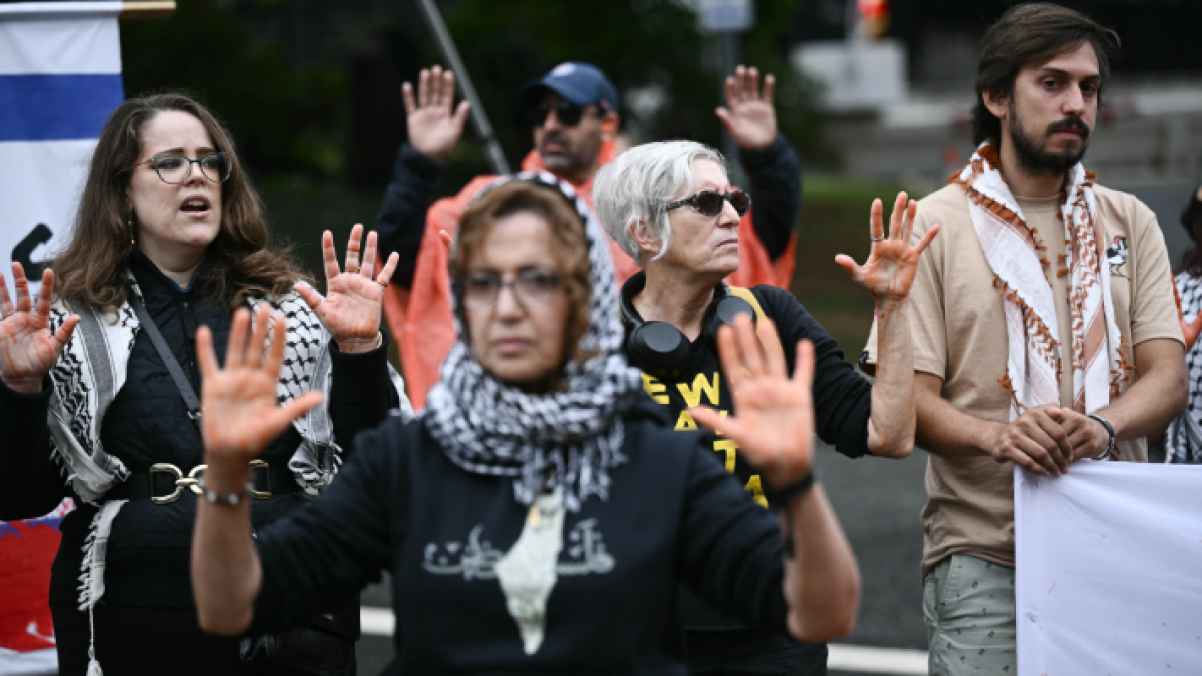The Palestinian keffiyeh becomes a global symbol in Washington protests in support of Gaza

In the heart of Washington, D.C., hundreds of activists and human rights advocates from diverse nationalities and backgrounds gathered, raising their voices against what they described as the “brutal aggression” targeting the Gaza Strip. The scene was dominated by the Palestinian keffiyeh, worn by demonstrators as a symbol of solidarity with the Palestinian people, transforming the streets into a human tableau telling the story of hope and resilience of a people facing death every day.
Chants rose among the crowds, carrying messages of freedom and justice, demanding an immediate halt to the Israeli attacks on civilians. Protesters held signs bearing slogans such as “Save Gaza” and “Freedom for Palestine,” affirming that the world’s silence was no longer acceptable in the face of children and women falling victim to bombing and destruction. For them, the protest was not merely a political act but a humanitarian call carrying the pain of an entire nation.
Keffiyeh and Palestinian Identity
The keffiyeh, wrapped around the necks of many participants, was not just a piece of fabric but a symbol of resistance and Palestinian identity. Wearing it in the streets of Washington was a clear declaration that Palestine is not alone, and that the cause remains alive in the conscience of peoples worldwide, despite attempts to erase or marginalize it on the international stage.
Remarkably, the demonstration brought together the elderly and the young, Arabs, Americans, and even Jews opposed to Tel Aviv’s policies, in a scene proving that justice knows no religion or nationality. Some participants spoke of their personal suffering with displacement or the loss of loved ones in Gaza, turning the gathering into a space for tears and testimony, and a reminder that Palestinian pain has become a universal human pain.
By the end of the day, as the sun set, the echoes of the chants still reverberated through the streets of the American capital. And although the demonstration could not stop Israeli warplanes at that very moment, the participants believed their voices were part of a global river of solidarity—one that will, one day, write a new chapter titled: Freedom for Palestine and Justice for Gaza.
